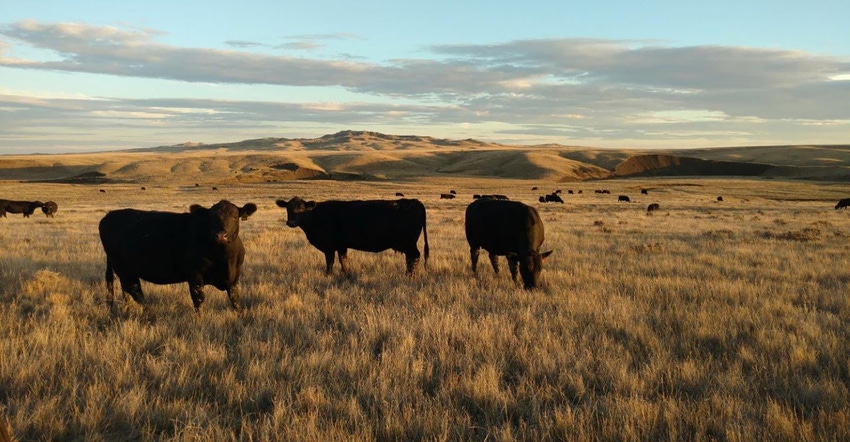Look broader
Systems thinking helps one veterinarian’s stocker clients identify sustainable solutions.
September 1, 2019

Sponsored Content
“Stocker operations have to be very adaptable and resilient to survive, and almost all stocker operations are very adept at fixing bad health events as they arise,” says John Groves, DVM, of Livestock Veterinary Service at Eldon, Mo. “The most exceptional operations are not only good at fixing bad health events as they arise, they are motivated to look at the fundamental roots causes that led to the disease event in the first place and they work on long-term strategies to mitigate those fundamental causes.”
Some call it systems thinking. Some term it holistic.
Either way, the notion is to consider any system in its entirety and how a change in one part of the system affects change in another.
“The reality is that one initial action seldom, if ever, results in only one reactive change,” explains Burke Teichert, a ranch strategic planning consultant, in a column he writes for BEEF magazine. “This is especially true in biological systems. The interconnectedness between creatures and plants that are affected by weather and environment makes predictability in farming and ranching quite difficult.
“That difficulty is exacerbated when we fail to look beyond the intended result. We must learn to see the reactions that happen in addition to the desired or expected result.”
Such thinking runs counter to the linear thought process most of us are taught.
In the case of cattle health, for instance, Groves explains veterinarians are taught to consider health challenges on an increasingly granular basis, focusing on ever finer details. Here’s the individual head of cattle being diagnosed, the likely organs affected; here’s the bacteria or the virus.
Without also considering the proverbial forest where the individual tree exists, seemingly logical solutions can lead to unintended consequences and unsustainable results.
Groves, who specializes in stocker cattle, shares an example.
When the first effective metaphylactic treatment came along in the mid 1990s, he explains it was a game changer. His clients could run exponentially more high-risk cattle with the same amount of labor.
Over time, BRD-based morbidity and death loss crept up to where it was before the treatment was available. Along came a new, effective metaphylactic product and clients were off to the races again, with the same gradual result over time.
“By using metaphylaxis, they changed by running more cattle through their systems,” Groves explains. “But the net BRD was still the same. I realized we weren’t moving the needle.”
That was about 15 years ago. Groves took a step back—way back. He’d stumbled across some information about systems thinking and tried the approach. That’s when he could clearly see that metaphylaxis wasn’t the problem or the solution, necessarily. Instead, moving the BRD needle had to do with many aspects of client operations.
He gathered and shared data with his clients. They could see the way they were using metaphylaxis wasn’t sustainable if they hoped to reduce BRD-related challenges.
More than just health
“Systems thinking helps you communicate with those you work with,” Groves emphasizes.
Since then, Groves consults with his clients on a wide array of their stocker management, including nutrition, pen size, employee training and bio-containment. They moved the BRD needle in a positive direction. More important, they discovered the value of systems thinking.
Consider this past year. A major challenge for his Central Missouri stocker clients revolved around the shortage of forage the previous summer. That meant many cow-calf producers elected to wean calves early. Specifically, Groves is referring to fall-born calves that his clients began procuring last spring.
Clients also employ a number of cooperators to start calves. So, shifting to significantly lighter calves required adjusting typical protocols, based on understanding the system and its components.
For instance, Groves explains clients and their cooperators set up more pens with bunks and waterers closer to the ground. They reduced pen counts and grouped calves across a weight range of 50 pounds rather than 100 pounds.
They adjusted rations to make them denser and more palatable. They reinforced sound cattle handling principles, understanding the inherent challenge of asking crew members to process 350-pound calves in facilities designed to process larger ones.
"Conventional or common practices of livestock healthcare are very focused on disease-causing organisms and how best to kill them," explains Greg Braun, 2007 Nuffield Scholar, in Holistic Livestock Healthcare, a report for Nuffield Canada. "The emphasis is placed on the nature of the bacteria or virus when making a treatment decision, which is assumed to be the primary cause."
“Using the appropriate antibiotic for the specified time frame should kill enough of the undesired organism for the animal to be ‘cured’. The holistic approach is about taking a broader view of disease and health. It looks for the deeper, more fundamental cause of disease, the very rational cause and effect relationships between an animal’s entire body and the complete environment,” he says.
“The animal is seen as being part of the complete farm ecosystem. A treatment of disease in the holistic approach will often focus on the overall health and immune system function of an animal rather than one specific bacteria, virus, or disorder.”
About the Author(s)
You May Also Like




.png?width=300&auto=webp&quality=80&disable=upscale)
